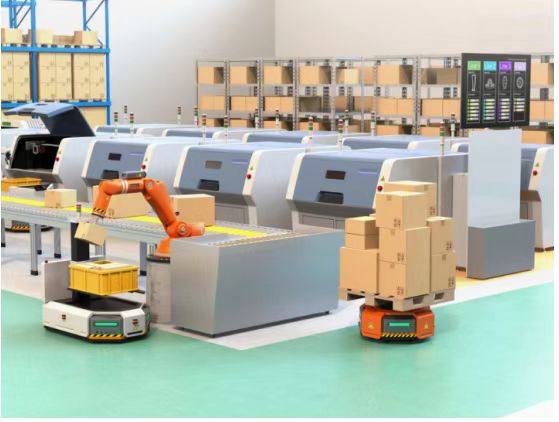
The adoption and utilization of automation and robotics continues to proliferate across industries, while developing their use in increasingly complex tasks and processes. To effectively address these increasingly advanced applications, the implementation of emerging technologies such as collaborative robotics, artificial intelligence, and autonomous vehicles is becoming more common. Automated Guided Vehicles (AGVs) and Autonomous Mobile Robots (AMRs) are both important parts of this emerging set of technologies, both of which have played or have played a key role in the emergence and development of robotic vehicles in manufacturing, as well as a wide range of integrated intralogistics and material movement processes.
AGVs and AMRs address some key manufacturing process and facility-related issues, as well as key cost-related metrics in the migration to continuous improvement concepts such as Lean Manufacturing and Six Sigma.
On-time delivery of product to assembly:
As one of the core tenets of Lean Manufacturing, Just In Time (JIT) is a production management philosophy that relies on raw materials to arrive at specific stages of production exactly when needed, thereby reducing all costs associated with work in process (WIP) to lowest. The ultimate goal of this strategy is to move along the zero-waste path and maximize the cost-effectiveness of joint work. When properly integrated into a factory's processes and existing control infrastructure, autonomous vehicle missions can be built around JIT schedules to maximize the efficiency of raw material inventory and assembly processes.
Reduce WIP in the assembly area:
Work in process costs are incurred when unfinished goods, including their associated costs such as labor, are hung up at any stage of the manufacturing process. Focusing on reducing WIP helps eliminate production bottlenecks and inefficiencies throughout the process. Reduction of work in process is a key metric that is continuously measured and reflected, both financially and operationally, in nearly every industry. WIP can be greatly reduced by implementing AGVs and AMRs by programming pickup and unloading around a just-in-time strategy, while allowing movement of raw materials and parts while tasks that require human interaction are completed simultaneously.
Flexible assembly line design improvements:
As your process grows and progresses, a high degree of flexibility is achieved thanks to the mobility of mobile robots. Reassigning tasks, relocating vehicles, and changing routes are all very simple HMI-driven procedures that curb the need to move your static facility elements such as shelving, conveyor and packaging systems, and more. Fleet expansion also provides an easy way to increase capacity by adding vehicles as your business and operations grow and develop.
Increased safety due to reduced forklift traffic:
When effectively integrated into a facility's control infrastructure, vehicles are given a specific set of process narrative-driven "missions", and they produce incredibly predictable and safe, rule-based traffic patterns. Utilizing mobile robots can do this while, in most cases, able to eliminate a significant portion of human-driven/guided fork and cart traffic throughout the facility if properly applied to material size and payload. In any busy facility that uses manned forklifts and lift equipment, potential human error is a common concern and a substantial safety risk. Autonomous vehicles greatly reduce the safety risk of human traffic error while reducing the overall volume of traffic and waste flows.




